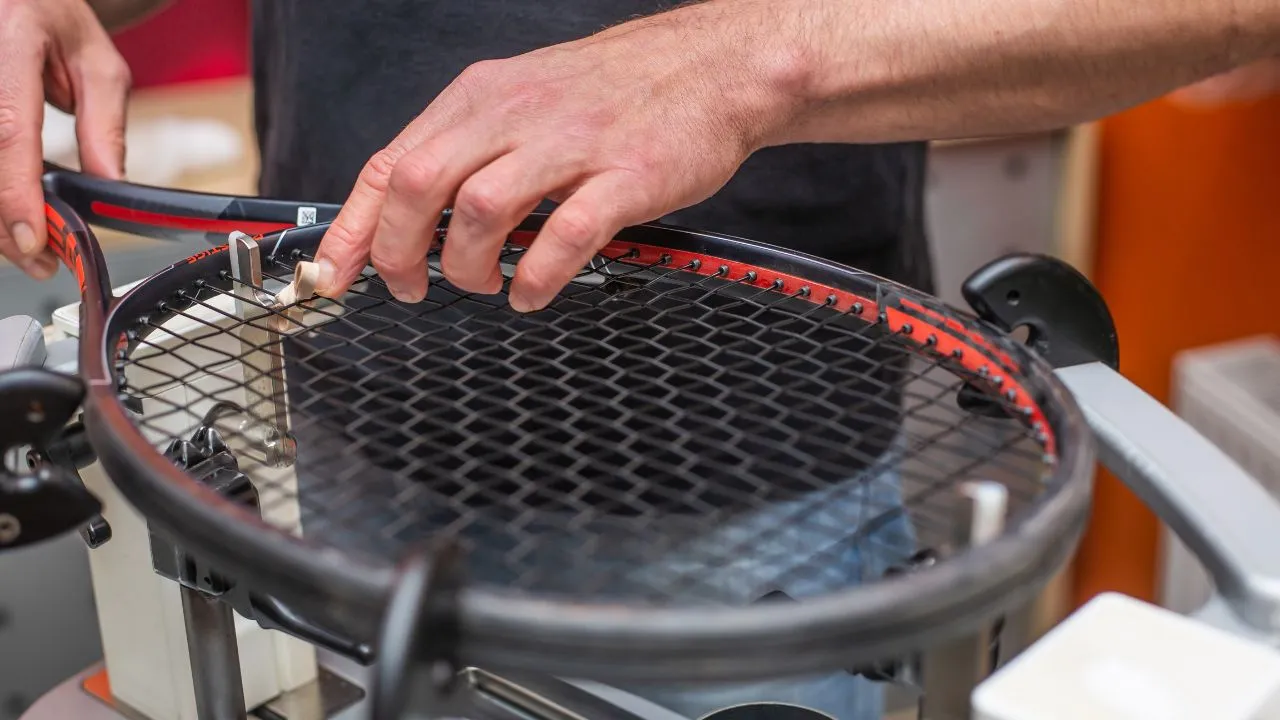Maximizing value in tennis racquet restringing requires strategic approaches. Implement these proven cost-saving techniques:
Reduce Restringing Frequency
Stop re-stringing based solely on time. Many players restring unnecessarily due to the “once per year” myth. Instead, re-string based on actual play frequency and string performance degradation. Play until strings break or tension drop significantly impacts control/power. Monitor play hours per string job.
Optimize Tension & Hybrid Setup
Consider lower tension within your acceptable range. Lower tensions place less stress on strings, potentially extending lifespan and allowing reuse of string savers. Utilize hybrid stringing: Combine expensive polyester in the mains with durable, inexpensive synthetic gut or nylon in the crosses. This harnesses playability benefits while significantly lowering material cost per restring.

Learn Stringing Fundamentals (DIY)
Investing in a stringing machine offers long-term savings for frequent players. However, this requires commitment and patience.
- Do: Start with basic techniques on old racquets. Use online tutorials (text/video) extensively. Practice knot tying meticulously. Begin with inexpensive, forgiving synthetic gut.
- Don’t: Attempt without thorough preparation. Rush the learning process. Practice on valuable frames.
Choose Economical String Options
Select value-focused strings. High-quality synthetic gut (e.g., SG) or durable nylon offers exceptional longevity and playability at a fraction of premium polyester or natural gut costs. While poly loses tension faster, consider durable co-poly strings designed for better tension maintenance if polyester playability is essential.
Buy Strings in Bulk
Purchase reels of your preferred string. Buying by the reel (typically 660 feet / 200m) drastically reduces the per-racquet cost compared to individual sets. This is highly cost-effective if you use the same string consistently and restring frequently. Coordinate bulk purchases with teammates or club members.
Utilize Your Old Strings
Reuse “string savers” if removed carefully during restringing. Salvage unbroken cross strings from partial breaks if they remain in good condition (less common, requires careful assessment).
Professional Services Smartly
Compare local shop labor costs. Pricing varies significantly. Ask about discounts for multi-racquet stringing or club affiliations. Supply your own string purchased at better prices to avoid shop markups, ensuring they accept customer string first.
Conclusion: Effective savings involve stacking strategies: reduce unnecessary restrings, optimize string choices/tension, consider DIY for high volume, and leverage bulk purchasing. Prioritize based on your playing frequency, budget, and willingness to learn new skills.



















